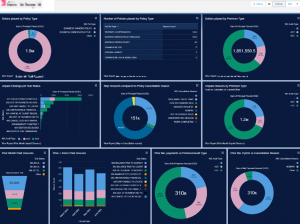Introduction
To determine the value of receivables written off to bad debt, you must first evaluate your current litigation policy.
More specifically, the written-off receivables that do not meet your litigation threshold. It is these accounts that have basically received a “free pass” from additional collection steps when the collection agency fails to recover.
Since they were too small to sue, it is reasonable to say they have never heard from an attorney, nor felt the impending consequences or pressure to pay.
Businesses are challenged daily to prioritize their cash flow and make tough decisions, like when do I sue to recover revenue and what balance size is it worth suing?
This “on the job training” prepares them for the collection calls they receive. Most know that if they hold out long enough, and the balance size is marginal most likely the collection agency will go away.
They are educated enough to know that due to the balance size, they will never hear from an attorney.
The “Sweet Spot”
A typical balance threshold for filing suit is $15,000+ based on client surveys.
However, due to the rising costs of litigation, bankruptcies, and unsatisfied judgments, many companies are increasing the threshold to even greater than $25,000.
This policy creates a “sweet spot.” The “sweet spot” holds balances that range from $1,000 to $14,999.99 representing accounts written off as too small to sue.
The value is determined by credit scoring and asset scrubbing, then placed with our law office contingency collection program. Typically, these debtors have never heard from an attorney, so placing them with our law office for collection calls will recover revenue thought lost.
Conclusion
The method Brown & Joseph uses to maximize your return on investment in time and to ensure the revenue return is to score the written-off receivables. Scoring will enable you to determine those that have money to pay and are still in business.
After all, since they are still in business after a year or so, it is obvious they could pay but have decided not to.
For years, I have been recommending this action to clients and all have profited by this policy. Statistics show that “sweet spot” recoveries range from 14% to 24% depending on the nature of your portfolio.
Every company could benefit from increasing their cash flow. This is a great way to start!





